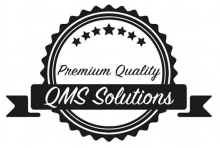Training objectives
· Developing the ability to interpret notations and symbols on technical drawings according to ISO standards.
· To learn to precisely apply GD&T requirements outlined in ISO standards.
· To familiarise participants with additional requirements to increase geometric tolerances without affecting assembly conditions.
Estimated contribution of the practical part: 60%
Duration: 2 days for 8 h
Programme and exercises:
1 Introduction:
- Structure of ISO versus ASME Standards.
- Classification of dimensions and tolerances.
- Basic principles of dimensioning.
- How GD&T was created.
- Disadvantages of coordinate dimensioning.
- Examples of proper and improper use of coordinate dimensioning.
- What is GD&T, advantages of its use.
- The advantages of using a convention in a serious sense.
2 Basic concepts and symbols:
- Key concepts.
- Theoretical dimension symbol.
- Tolerance frame.
- Symbols for basing.
- Classification and symbolism of geometric tolerances.
3 Additional symbols:
- Symbols for material conditions.
- Free status condition.
- Identifiers of the tolerated element.
- Identifiers of ancillary elements.
- Symbol associated with size tolerance.
- Symbols defining how the tolerance relates to several elements at the same time.
- Symbol defining a specific asymmetrical tolerance distribution.
- Symbols defining an unspecified tolerance offset.
- Symbols defining the application of a tolerance to a characteristic directly related to the actual outline of the component being tolerated.
- Symbols defining the application of a tolerance to a characteristic not directly related to the actual outline of the component being tolerated.
- Modifiers defining the method of determining the characteristics of a tolerated element.
- Modifiers defining the parameters for determining the characteristics of a tolerated element.
- Symbols typical of the ASME standard.
4 Shape tolerances:
- Straightness.
- Flatness.
- Roundness.
- Cylindricality.
- Line and surface profile without reference to bases.
5 Orientation tolerances:
- Parallelism.
- Perpendicularity.
- Inclination.
- Line and surface profile with reference to bases.
6 Position tolerances:
- Position tolerance.
- Coaxiality tolerance.
- Symmetry tolerance.
- Line and surface profile with reference to bases.
7 Run-out tolerances:
- Circular run-out (axial and radial).
- Total run-out (axial and radial).
8 Conclusion:
- Myths associated with the use of GD&T.
- Returning to the topic from the introduction.
































